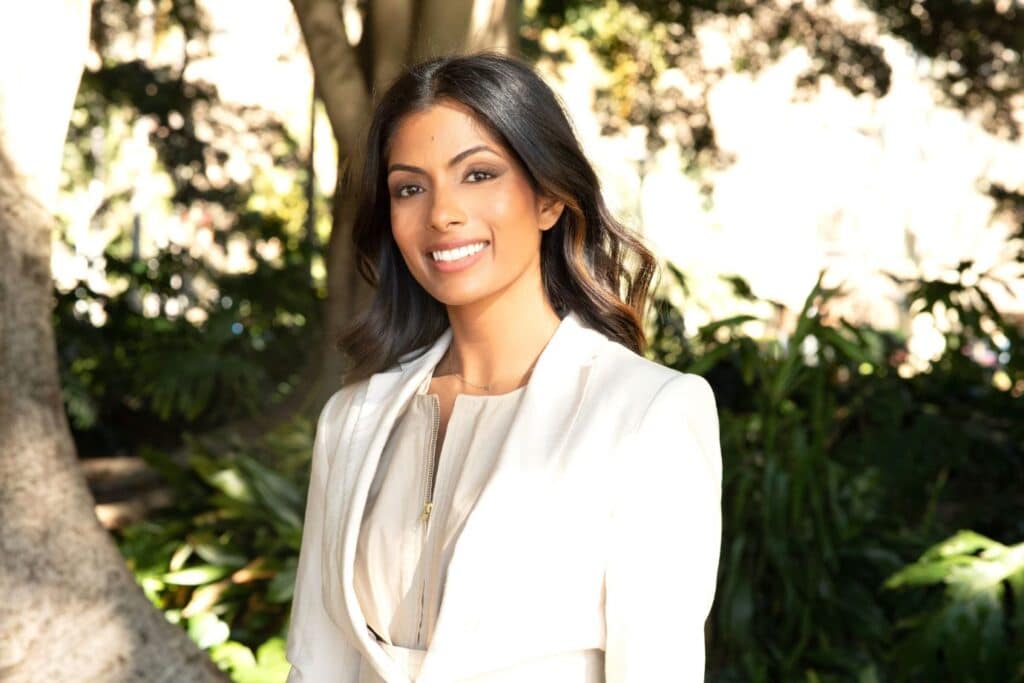Last week, the Australian Human Rights Commission (AHRC) announced changes to the legal framework of how sexual harassment and sex-based discrimination is dealt with in Australian workplaces, with organisations now required to meet positive duty requirements.
The changes – which require organisations and businesses to focus on actively preventing unlawful conduct – were praised by legal experts, business leaders, and most of all, women. Since sexual harassment and sex discrimination in the workplace is experienced by women at higher rates than men, women will benefit from these changes the most.
But women aren’t a homogenous group, human rights lawyer Prabha Nandagopal tells Women’s Agenda, and the positive duty changes will benefit some women more than others.
“For decades, gender inequality in Australia has been viewed through a homogenous lens,” Nandagopal says.
“It hasn’t really been done in an inclusive way that captures women in all their diversity.”
The stats
Nandagopal is the founder of Elevating Consulting Partners and has directed teams and reviews at the Australian Human Rights Commission. She was the Director of Legal for the Commonwealth Parliamentary Workplaces review in 2021.
Nandagopal has worked with women employees across Australia who not only face sex-based discrimination and sexual harassment, but also racism.
“Certainly, anecdotally, that is what I am hearing from people in those groups,” she says.
“It’s an issue that comes up time and time again, and now, we have the research through ANROWS to back it up.”
In August this year, Australia’s National Research Organisation for Women’s Safety (ANROWS) released a report on rates of sexual harassment for refugee and migrant women. Almost half of respondents – 46 per cent – said they had experienced sexual harassment in the workplace.
Women from several other minority groups have similar stories. It’s the same statistic for the LGBTQIA+ community (46 per cent). For women with a disability, 48 per cent have experienced sexual harassment in the workplace.
Alarmingly, 56 per cent of Aboriginal and Torres Strait Islander women said they have experienced sexual harassment in the workplace, according to the Respect @ Work report from 2018.
On 12 December, changes to legislation came into effect meaning businesses and workplaces in Australia now have a positive duty obligation. This means they must actively prevent sex-based discrimination and sexual harassment from occurring at work, rather than reactively managing complaints.
The changes came into effect as the latest strategy from the AHRC and the Australian government to reduce and effectively eliminate unlawful conduct in the workplace that disproportionately affects women.
However, as per the guiding principles of the positive duty changes, Nandagopal says it’s imperative to take an intersectional approach.
“If you are going to effectively eliminate sexual harassment, you can’t do that without also addressing racism, homophobia, ableism, etcetera – they’re all intertwined,” she says.
“You can’t be treating women as a homogenous group.”
How to take an intersectional approach with positive duty
Australian organisations are increasingly getting better at looking at gender equality in a more inclusive way – not just focusing on white, straight, cisgendered, able-bodied women. But there is still a way to go, and Nandagopal says cultural change starts from the top.
“Having leaders talk about gender equality in a more inclusive way – that makes a big difference,” Nandagopal says.
Leaders and executives also need to “cast a broader lens” when hiring staff and ensure women in all their diversity are included in the workplace.
Nandagopal says championing safety and inclusivity for staff in the workplace begins with talking to them about their experiences and their needs.
“You have to ensure that you’re consulting with workers who have those intersecting identities – understand what their experiences are, consult with them on the measures that would be most effective for them,” Nandagopal says.
“How they are going to have an increased sense of belonging in the workforce… is really important.”
Finally, beyond workplaces, broader society must take a more intersectional lens when discussing issues on gender like sexual harassment and sex-based discrimination in the workplace. And the place to start to foster those inclusive conversations is in the media.
“I don’t think this issue is really ventilated,” Nandagopal says. “If you look at all the coverage on the positive duty, I didn’t see that these stats were brought to the forefront.”
Are businesses ready?
Last week, Nandagopal spoke with Angela Priestley on The Crux, the weekly Women’s Agenda podcast, about the positive duty changes.
On the episode, she explained what exactly positive duty is, and said businesses might not be ready for those changes. In fact, a study from the Australian Institute of Company Directors (AICD) found less than half of ASX300 board directors believed their company was prepared for the positive duty changes.
“That’s the top end of town, with significant HR and legal resources,” she said.
“So you can imagine, the smaller and medium businesses who don’t have those types of resources – they’re unlikely to be prepared as well.”
For more information on what positive duty is, click here.


